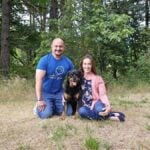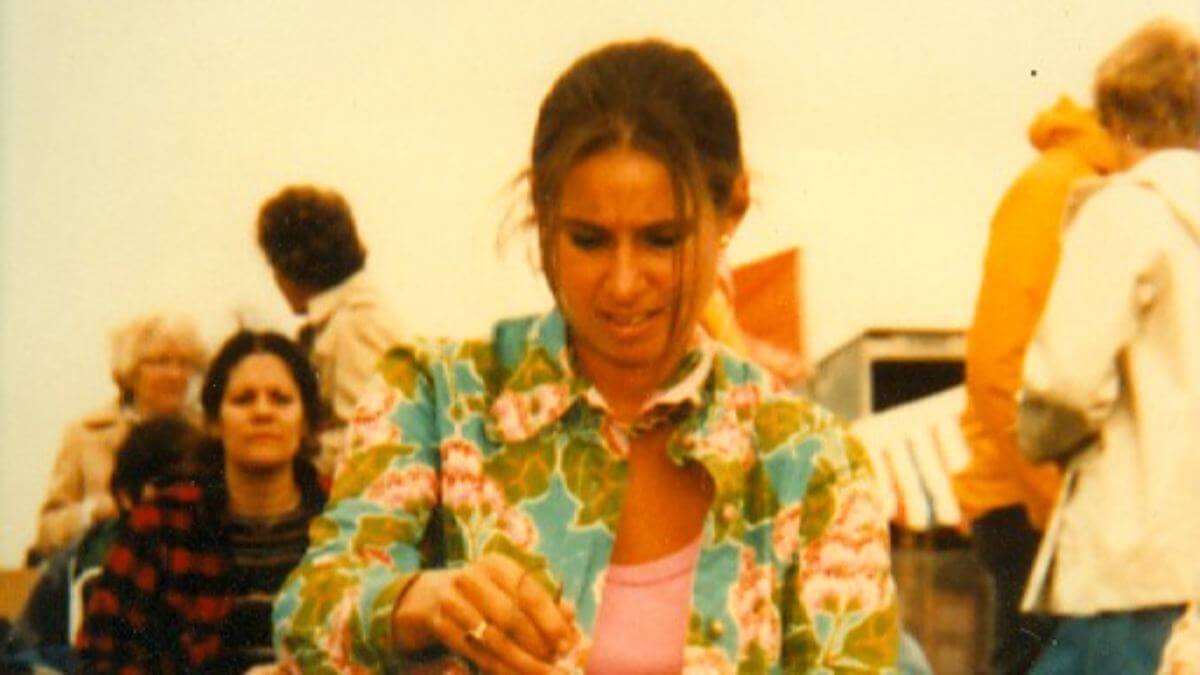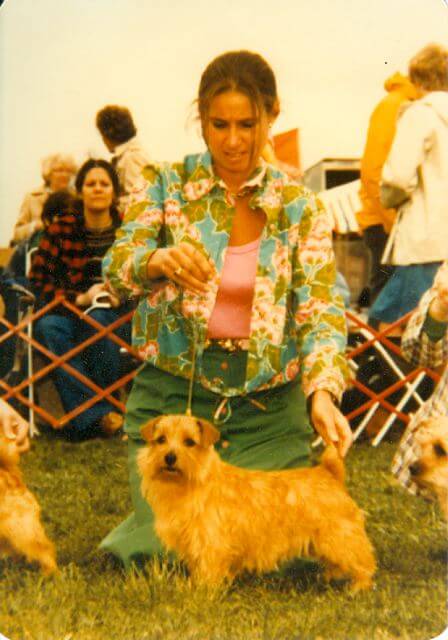


Home » Judging the Norfolk Terrier

This article was originally published in Showsight Magazine, August 2013 issue.
I have bred and owned Norfolks so long that when I first started over 35 years ago they were still called drop-eared Norwiches. So much has changed since then. My first Norfolk was bred by John Mandeville, CH Ragedge Are You Ready, “Muffin” is the Norfolk from whom all the Yarrow and Yarrow Venerie Norfolks are descended. When I first had Norfolks I lived in Virginia and Labs were my main breed. It was through Labs that I met Mrs. Joan Read of the famous Chidley Labradors and Norwiches. She was my first client as a professional handler and my mentor till her death in 1995. Joan introduced me to John and Pam Beale who became clients and later partners and have been now for over 20 years. Our most famous collaboration of course was Coco, Eng Am Ch Cracknor Cause Celebre, whom I showed and Pam co-owned with Stephanie Ingram and Coco’s breeder Elisabeth Matel!. Since approximately 1995 Pam and I have co-bred and owned Norfolks and later Norwiches with great success.
Having bred numerous Champion, Best in Show, and National Specialty winners under the Yarrow-Venerie prefix. We strived to breed sound typey dogs who will be great companions as well as good examples of the breed in type and structure. I showed dogs with Peter Green while I lived on Long Island running Mrs. Read’s kennel and showing mostly terriers, sporting dogs, and a lot of the newly recognized Portuguese Water Dogs. When Joan died I moved to PA with Peter and the Green Team took off. We retired from handling in 2006 and have been judging here and abroad ever since. I am currently approved to judge all terriers, and some toy, sporting, and working breeds. I still breed Norwich, Norfolks, and Affenpinschers, and show occasionally.
I have been honored to judge both the Norwich and Norfolk national specialties and it is about judging the Norfolk which I have been asked to write today. I think when judging any breed the first thing to consider is the outline. The silhouette should be distinctive and immediately recognizable. The Norfolk is short backed but not square. He has a slightly longer ribcage not as well sprung as his cousin the Norwich. He has short sturdy legs with good angulation fore and aft. He has a hard rough coat that does not appear to be trimmed or scissored. My pet peeve is a dog that has been trimmed with a very short top coat and masses of skirt and leg hair giving an artificial appearance. A correctly groomed Norfolk should look like his coat grew that way naturally. Norfolks should not be top and tailed but should stand on their own and be attentive to their handler.

After initial assessment on the ground move the exhibit around the ring to see how he comports himself. Many dogs on their toes when they are standing fall apart on the move. Structure and balance can be seen as a dog moves. This is the time to check for general soundness sometimes in a large class it is better to move 2 or 3 dogs at a time to give careful consideration to each one as it goes around the ring. This is also the time to check topline, length of neck, tail set, and carriage. After your first general assessment of the dog on the move you are ready for a more detailed examination on the table. First check the overall outline, then approach the dog head on with confidence. I always examine the head first checking proportion, ear placement, width of skull, eyes, and expression. After the dog is used to my hands on his head I check the bite. Some Norfolks are put off by someone first diving in to check their teeth. They should have good width of back skull and a strong muzzle slightly shorter than the back skull. The ears are set fairly wide and point downward towards the outside corner of the eye.
Try to avoid dogs with long ears shaped like a Sealyham or ones that are hanging down toward their cheek. The eye should be dark, expressive, and inquisitive. Light eyes or eyes that are too large or too small give a foreign expression. If their eyes are too small they can have a mean or hard-bitten look that is not typical and too large an eye will give a soulful look which is also foreign for a Norfolk. A dark medium eye full of mischief is ideal. When you start your examination of the body, you should be impressed that this is a small dog of good substance—nothing toyish about it. Check for shoulder placement upper arm and feel his front legs for substance are they strong and straight or just groomed to look so. Check his feet are they well padded or flat-footed. You will find as you judge Norwich and Norfolks that Norfolk feet are not usually as well arched or rounded as Norwiches. But they should never be flat-footed. The neck should fit cleanly into well-placed shoulders that have good layback. The back is short, strong, and level with a high set tail. And as terrier people like to say “there should be a lot of dog behind the tail.” A weak topline and low tail set are not characteristic.
Norfolks are generally slightly longer cast than their cousin the Norwich. This does not mean they are a long dog and extra length should be in the rib cage and not the loin. Since Norfolks are a coated breed, grooming plays an important role in their appearance. You must feel for good bone, good shoulder layback, and good turn of stifle. Don’t be fooled by someone’s grooming prowess. Be sure to check for coat texture and density. A harsh double coat is a must. When the time comes to move the dog individually make sure he moves away on strong hindquarters with good propulsion. Short strong hocks should move parallel and demonstrate good drive. The front coming back should be true with no sign of weaving or being out at the elbow. On the last go around from the side, check again for balance of movement.
Does he have good reach AND drive and does he move all of one piece. After you have gone over your class if you are still undecided have a couple of your favorites out to stand on their own. I do not advise sparring per se as Norfolks are pack dogs and should not be quarrelsome. They should however be alert and fearless. Seeing a terrier standing on his own making the most of himself is a wonderful sight. I hope I have been able to help you understand the breed I have loved and have been involved with for so many years and that you enjoy judging this wonderful breed for all it has to offer.